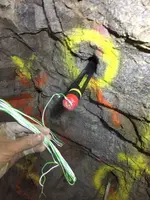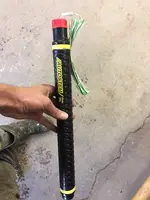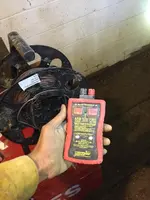Dartas are considered the best of hydraulic splitters I've heard. They ain't cheap though and those plug and feather tools wear out with some frequency and those are pretty pricey also. You need also a good rockdrill to. One of the mines I sell bits and steel to has I think 10 of those splitters. They search for rare and valuable mineral specimens and use the splitters to carefully excavated the specimens, to reduce damage. When I sold the jackhammer moil points and chisels to dang near every equipment rental yard in Colorado, Utah, Arizona, Nevada and New Mexico a few of those rental houses kept a hydraulic rock splitter or two in there fleet. If recall one outfit in Flagstaff, AZ had like 4 or 5 of them, as he had a good demand for them in that area. I think we might have a Chinese made hydraulic splitter, the boss purchased to see if it's worth crap to sell for a bargain, but I haven't really heard how's it's worked out, but I do believe it's been rented out a few times down in Arizona.
That is good to know. I do not know anyone around here who rents them, but then this is not exactly a mining state.
I love to make things go boom, but sadly it is just no longer worth it. It just is not 1985 anymore.
I did see where Jeff Williams used Sierra Blasters as mini-dynamite, but it was for blasting out an underground eluvial deposit and not hard rock mining. He used plumbers putty to hold the charge into the hole. It might work on hard rock, but I kind of doubt it, and even then the price was kind of high, and I am not sure how much production a person would get per mini-stick of dynamite.
Even with a blasters license, and producing your own explosives, I just do not see blasting as really being worth it.
For me, my very limited surveying so far has concluded that I am running veins of quartz at 20-40 feet apart in a 218 degree strike pattern. Since I can get at the seam from the surface, I think it would be cheaper to just hammer out the seam, then dig it out with the excavator, then process the rock. I am limited how far down I can dig, but by the time I traverse one end of this farm to the other, I would be most likely dead.
IF my assay reports stay on track, at 50% gold separation, I would have to process less than a hundred cubic yards of rock per year to pay my yearly property taxes. That has always been the goal.
Those are loose numbers of course, but it is the kiss principle...Keep It Simple Sir






